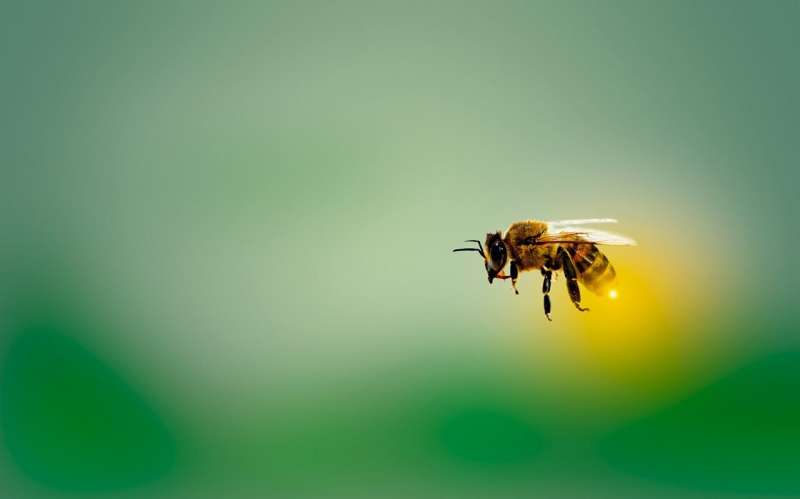This article has been reviewed according to Science X's editorial process and policies. Editors have highlighted the following attributes while ensuring the content's credibility:
fact-checked
peer-reviewed publication
trusted source
proofread
eDNA could help protect insect pollinators of avocado flowers

New Curtin University-led research has found that using environmental DNA (eDNA), in conjunction with conventional methods, to monitor how insects interact with flowers could potentially improve conservation rates.
Published in Molecular Ecology Resources, the team investigated whether eDNA (DNA left from animals in the environment including in soil, water and air) monitoring of Hass avocado tree flowers in the South-West region of Western Australia was more effective at identifying which insect species interacted with the flowers compared to traditional methods such as camera recordings and pan traps.
Lead researcher and Ph.D. student Joshua Kestel, from Curtin's School of Molecular and Life Sciences, said more than 40% of all insect species could be at risk of extinction in the near future due to climate change, loss of habitat, pesticide use and emerging pests and pathogens.
"Finding the most effective way to monitor and preserve insect species which are essential to food production systems is so important and using conventional survey methods alone can be time-intensive and costly," Kestel said.
"Trace amounts of DNA left by flower visiting insects can offer an accurate and alternative way of detecting these managed and unmanaged insect species, especially in rural and remote areas which are difficult for researchers to access on a regular basis.
"We found that eDNA monitoring of flowers, used in conjunction with conventional methods, has the potential to revolutionize the way insect communities are monitored in the environment. This could help researchers better understand the impact that climate change, diseases, habitat loss and other disturbances may have on these vulnerable species."
Kestel explained that by using eDNA combined with other methods, the team was able to identify 49 different insect families, including hoverflies and honeybees, that regularly visited Hass avocado tree flowers in WA.
"Insects like hoverflies and honeybees are important pollinators for flowers and support healthy plant production, but there are some pests, such as mites, which need to be detected before they become established in these habitats," Kestel said.
Co-author Associate Professor Paul Nevill, also from Curtin's School of Molecular and Life Sciences, said developing a cross-sector DNA-based survey and monitoring tool would be critical for both agriculture and nature management.
"We need to be better prepared to address the challenges associated with insect-flower pollination in a time of rapid climate change. Currently, services that ensure plants and flowers are adequately pollinated are valued at more than $28 billion to Australia's economy, so our research could potentially help solve these challenges," Nevill said.
More information: Joshua H. Kestel et al, eDNA metabarcoding of avocado flowers: 'Hass' it got potential to survey arthropods in food production systems?, Molecular Ecology Resources (2023). DOI: 10.1111/1755-0998.13814
Journal information: Molecular Ecology Resources
Provided by Curtin University


















